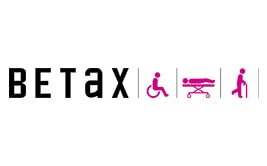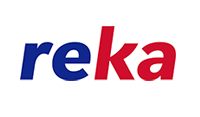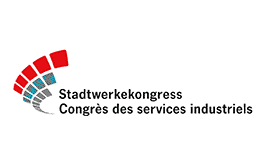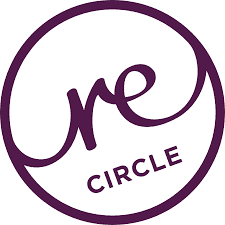A smooth user experience: the science behind Google’s Web Vital Metrics

Web-Vitals is a Google initiative designed to help business owners, marketers and developers alike identify opportunities to improve the user experience.
These signals are based on extensive work by many researchers in the fields of human-computer interaction (HCI) and user experience (UX).
However, choosing the right metrics and thresholds is not as simple as reading a research paper to find the answer. Imagine you are going to an unfamiliar city to reach an important appointment.
You walk through various streets and city centers along the way.
But here and there loose cobblestones make you stumble, there are slow automatic doors that you have to open, and unexpected construction sites lead you astray.
All these events interrupt your progress, increase stress and distract you from your goal.
Users on the web are also on a journey where each of their actions should represent a step in what would ideally be a continuous flow.
And just as in the real world, they can be interrupted by delays, distracted from their tasks and make mistakes.
These events can in turn lead to reduced satisfaction and abandonment of a site or the entire journey.
In both cases, removing interruptions and obstacles is the key to a smooth journey and a satisfied user.
So, what’s stopping users on the web?
Interruptions due to waiting situations: Avoid long website loading times
The most common type of interruption that web users experience is waiting for pages to load.
To a developer, loading a page is a discrete process, and some delay may seem inevitable.
However, a page load often occurs in the middle of a user journey while they are catching up on current events in the news, researching a new product, or adding items to their cart for purchase.
So from the user’s perspective, loading a particular page is not a natural pause: They haven’t reached their destination yet, which may make them less tolerant of delays.
This means that pages need to load quickly for the user journey to run smoothly.
How fast is fast enough?
In some ways, this is the wrong question.
There is no single magic number, and there are three main reasons for this.
Firstly, the answer depends on the outcome you are considering, such as abandonment, user satisfaction or task performance.
Different studies focus on different outcomes and produce different results.
Further, the effect of delays varies enormously depending on the user’s personality and previous experience.
But how can you minimize the occurrence of obstacles and interruptions on websites?
The most common type of interruption that web users experience is waiting for pages to load.
Loading a page unfortunately often happens in the middle of the user’s journey when they are catching up on current events in the news, researching a new product or adding items to their shopping cart for purchase. So from the user’s perspective, waiting for a particular page to load is not a natural interruption: He has not yet reached his destination, which may make him less tolerant of delays.
This means that pages need to load quickly for the user’s journey to run smoothly.
Finally, the effect of delays varies depending on context and situation.
News sites, shopping sites and travel sites are often part of different types of user journeys, and the overall curve above might look different for each of them.
Even within a context, page design and user behavior can change over time.
Progressive loading of content, avoid layout shifts
Most websites need to load multiple elements, and often this happens progressively.
This can actually be an advantage: If some content appears as early as possible, a user can start making progress toward their goal without waiting for everything that needs to load.
However, if the position of elements that are already visible changes as other elements load, this can negatively impact the user experience in two ways.
One basic cause is that it takes the user’s eyes a few hundred milliseconds to find the new position of an element when it suddenly moves.
If the element has been moved out of view, it takes much longer and it is more difficult to reorient.
This kind of disruption slows down the user journey and can be very frustrating.
So a more serious consequence is that unexpected layout shifts can lead to errors.
If the user tries to tap an element that then moves, they may end up tapping something else that has moved to its original position instead.
This is because the delay from sensing the movement to deciding to cancel the action to actually doing it is impossible for a human.
This could mean that they inadvertently click on a link, ad or ‘buy now’ button and significantly disrupt the intended user journey.
Cumulative Layout Shift (CLS) measures how often and how severe unexpected layout shifts occur on a page.
Fewer shifts mean fewer interruptions and errors.
It is recommended that websites aim to achieve a CLS of less than 0.1 for 75% of page views.
Closing words
The science behind Web Vitals is an important factor in the success of websites in today’s digital age.
Google’s initiative to improve user experience by identifying interruptions and roadblocks has proven to be very valuable.
Web developers, designers and business owners can improve the user experience of their websites by using metrics such as LCP, CLS and FID to increase user engagement and conversion rates.
An important aspect of Web Vitals is that they are user-centric and focus on improving the user experience.
They measure the performance of the website not only from a technical perspective, but also from the user’s perspective.
This allows developers to focus on improving areas that have a direct impact on the user experience, such as loading time or website stability.
Another important insight from the Web Vitals is that there is no universal solution.
Every website has its own specific requirements and target groups that have different expectations of the user experience.
For this reason, developers and companies must adapt the Web Vitals metrics to the individual needs of their website and review them regularly to ensure that they meet current user requirements.
In addition, analysis of Web Vitals metrics shows that better performance leads to higher engagement and lower abandonment rates.
Websites that adhere to the Web Vitals metrics have a higher chance of increasing user engagement and satisfaction, thus increasing their traffic and conversion rates.
This is especially crucial for businesses, as an improved user experience can lead to increased sales.
Overall, web vitals are an important factor in the success of websites in today’s digital age.
Google’s initiative to improve user experience has proven to be extremely valuable as it provides developers and businesses with the tools to improve the user experience of their websites.
By paying attention to these metrics, businesses and developers can increase their engagement and reduce their abandonment rates, resulting in a better user experience and higher conversion rates.
Wenn auch Sie mit einer Herausforderung konfrontiert sind und Unterstützung oder Beratung benötigen, dann kontaktieren Sie uns gerne.




















